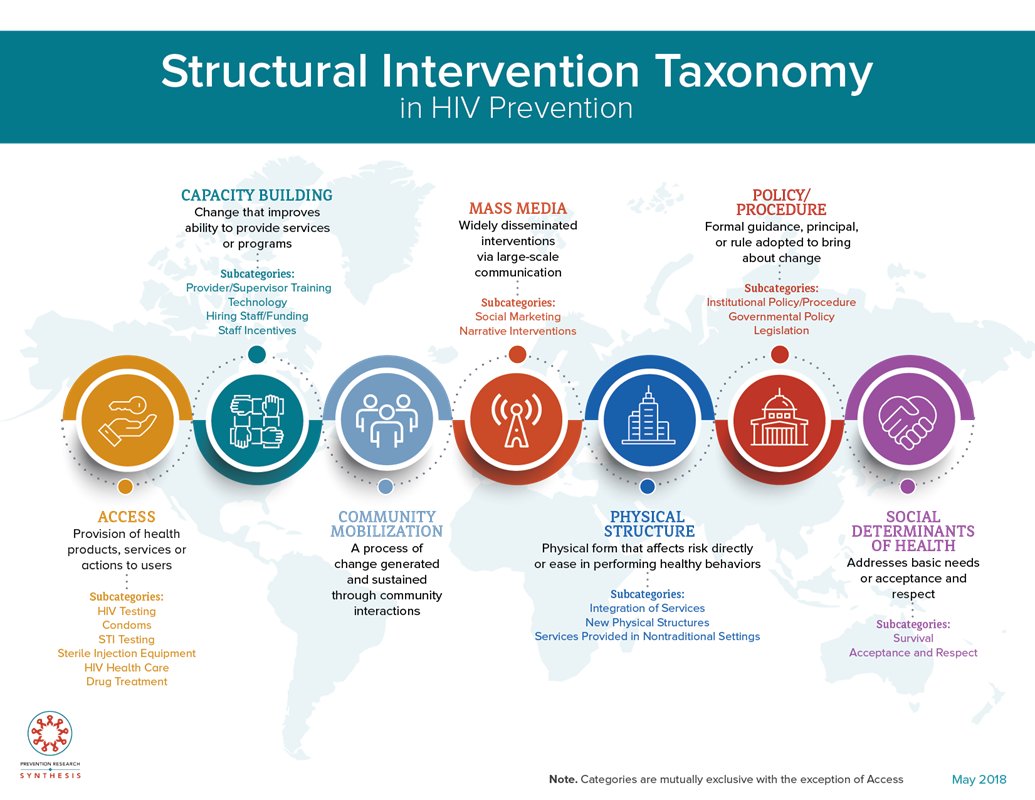Structural interventions in HIV prevention: A taxonomy and descriptive systematic review, 2017
Citation
Sipe, T.A., Barham, T. L., Johnson, W. D., Joseph, H., Tungol-Ashmon, M. L., O’Leary, A. (2017). Structural interventions in HIV prevention: A taxonomy and descriptive systematic reviewexternal icon. AIDS and Behavior, 21(12), 3366-3430. doi: 10.1007/s10461-017-1965-5
Visual Abstract

Background
One of the four national HIV prevention goals is to combine approaches that work well to prevent HIV infection. In public health, practices that change the environment can help people make healthy choices. Structural approaches, which aim to change the environment, rather than individual behaviors, may work in preventing HIV infection. Previous systems for grouping and describing structural interventions in HIV prevention were either not big enough or did not cover enough components.
Questions addressed in the review
- What types of HIV prevention structural interventions are in the literature?
- What are the outcomes of HIV prevention structural interventions?
- Are there patterns in types of HIV prevention structural interventions? (Do certain types go together?)
- What are the study designs of HIV prevention structural interventions?
- Have the types of HIV prevention structural interventions changed over time in terms of location, structural intervention type, research design, and population groups?
Search date
The review was finalized in May 2017 and covers publication years 1998-2013.
Study characteristics
We found 213 structural interventions. Many interventions focused on populations that are affected by HIV (e.g., people who inject drugs).
Key results
This paper describes a complete, well-defined taxonomy (or arrangement) of structural interventions with 7 categories: Access, Policy/Procedure, Mass Media, Physical Structure, Capacity Building, Community Mobilization, and Social Determinants of Health. Most categories include subcategories for a total of 20 subcategories. All interventions in this review fit into at least one category of the new taxonomy.
Quality of the evidence
A little less than half of the included studies had strong designs and a little more than half of the studies had weaker designs.
Study funding source
This study was funded by the Centers for Disease Control and Prevention.
Related Resources

